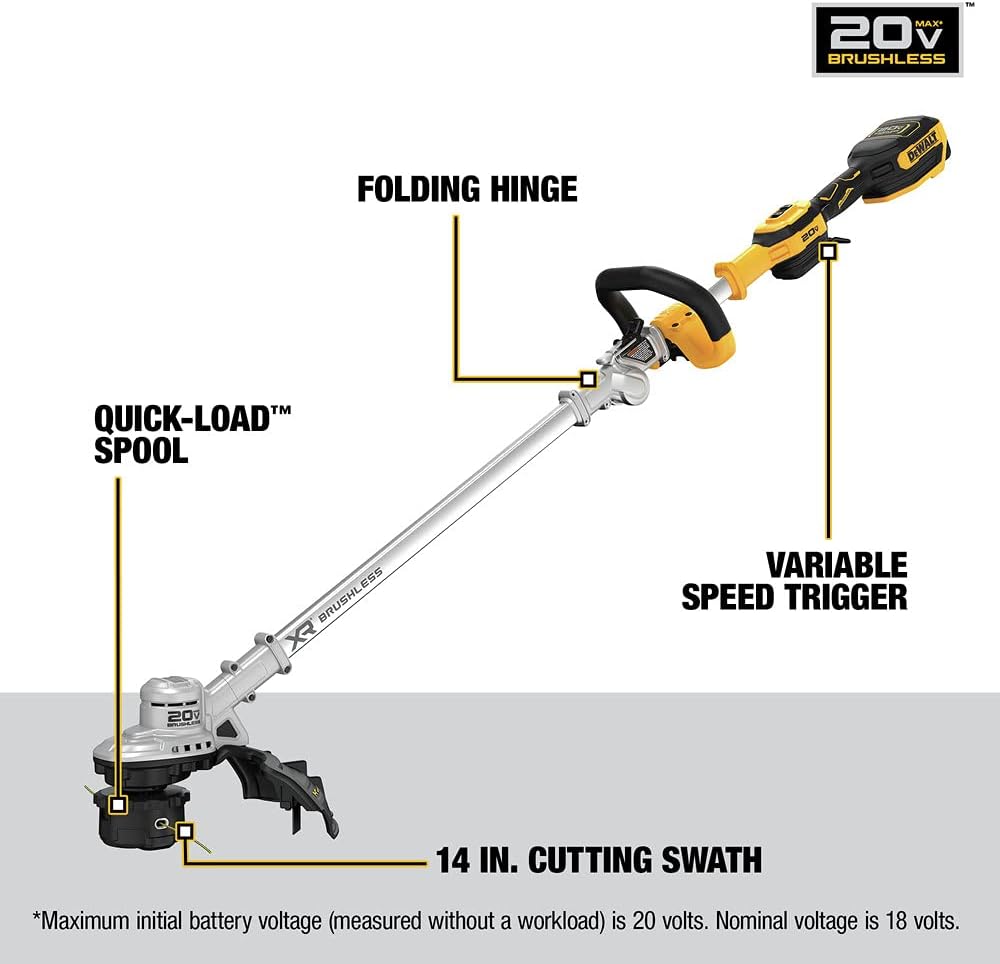







Price: $99.99 - $219.00
(as of Apr 08, 2025 11:29:55 UTC - Details)
The Best Weed Eaters: Your Ultimate Guide to Choosing the Right One
Introduction
When it comes to maintaining a neat and tidy lawn, having the right tools can make all the difference. Among these tools, weed eaters—also known as string trimmers—are essential for keeping those pesky weeds at bay. If you're on the hunt for the best weed eaters, you've landed in the right place! In this comprehensive guide, we'll explore everything you need to know about choosing the perfect weed eater for your yard. From gas-powered options to electric models, we’ll cover the key features, benefits, and considerations that can help you make an informed decision.
Why You Need a Weed Eater
Weed eaters are designed to tackle areas that lawn mowers can’t reach, such as along fences, around trees, and in flower beds. They provide a clean finish to your landscaping efforts and help prevent weeds from overtaking your garden. With so many options available, knowing what to look for can feel overwhelming. But don’t worry! We’ll break it down for you.
1. Gas-Powered Weed Eaters: The Power You Need
What to Look For
Gas-powered weed eaters are known for their robust performance and ability to handle tough jobs. If you have a large yard or need to tackle dense vegetation, a gas model may be the best option for you. Look for features such as a two-stroke or four-stroke engine for efficient power. Additionally, consider the weight of the unit; a lighter model can make maneuvering easier during extended use.
Benefits of Gas Models
One of the main benefits of gas-powered weed eaters is their unlimited runtime. Unlike electric models, you don’t have to worry about battery life, making them ideal for larger properties. Additionally, they typically offer stronger cutting power, allowing you to tackle thicker weeds and overgrown grass with ease.
2. Electric Weed Eaters: Convenience and Ease of Use
Corded vs. Cordless
Electric weed eaters come in two main types: corded and cordless. Corded models are perfect for small to medium-sized lawns, providing a consistent power supply without the need for battery changes. On the other hand, cordless models offer greater mobility and are perfect for those who prefer a lightweight option without the hassle of cords.
Why Choose Electric?
Electric weed eaters are quieter and more environmentally friendly than their gas counterparts. They require less maintenance and are generally easier to start. If you're looking for a hassle-free option for light to moderate jobs, an electric weed eater might be the way to go.
3. Battery-Powered Weed Eaters: The Future of Lawn Care
Advantages of Battery Models
Battery-powered weed eaters have gained popularity in recent years due to their convenience and performance. These models combine the benefits of electric and gas weed eaters, offering portability without sacrificing power. When choosing a battery-powered option, look for models with lithium-ion batteries, as they provide longer run times and quicker charging.
Ideal Uses
Battery-powered weed eaters are perfect for homeowners with smaller yards, or those who need a lightweight tool for quick touch-ups. They’re also an excellent choice for people who want to minimize noise and emissions while still getting the job done efficiently.
4. Features to Consider: Making an Informed Choice
Cutting Width and Height Adjustment
When selecting a weed eater, consider the cutting width, which affects how much area you can cover in a single pass. Wider cutting widths can save you time, while adjustable height settings allow for more versatility in tackling different types of weeds and grass.
Ergonomics and Comfort
Look for features that enhance comfort during use, such as padded handles, adjustable shafts, and lightweight designs. These features can make a significant difference, especially during longer sessions of yard work.
5. Maintenance Tips: Keeping Your Weed Eater in Top Shape
Regular Care for Longevity
To ensure your weed eater lasts for years, regular maintenance is key. For gas models, check the oil levels and clean the air filter periodically. For electric and battery-powered models, keep the cutting line fresh and clean the unit after each use to prevent debris buildup.
Troubleshooting Common Issues
If your weed eater isn’t performing as expected, common issues may include tangled lines or dull blades. Regularly inspect your equipment and replace parts as necessary to keep it running smoothly.
Conclusion
Choosing the best weed eater for your needs can transform your yard care routine. Whether you opt for a gas model for its power, an electric option for convenience, or a battery-powered unit for portability, understanding their unique features will help you make the right choice. Remember to consider your yard size, the type of weeds you often encounter, and your personal preferences in terms of maintenance and ease of use.
By investing in a quality weed eater, you’ll be well on your way to achieving a pristine lawn and garden. No more overgrown edges or stubborn weeds—just a beautifully manicured outdoor space that you can enjoy all season long. Happy gardening!
Folding hinge to fit into small storage spaces**
Reduced length when folded for easy transportation**
14 in. swath for a wide cutting area
Durability even in the thick brush
Choose between performance and runtime with variable-speed trigger
Wind new line fast with QuickLoad Spool
Control power level with Hi/Lo speed control switch
